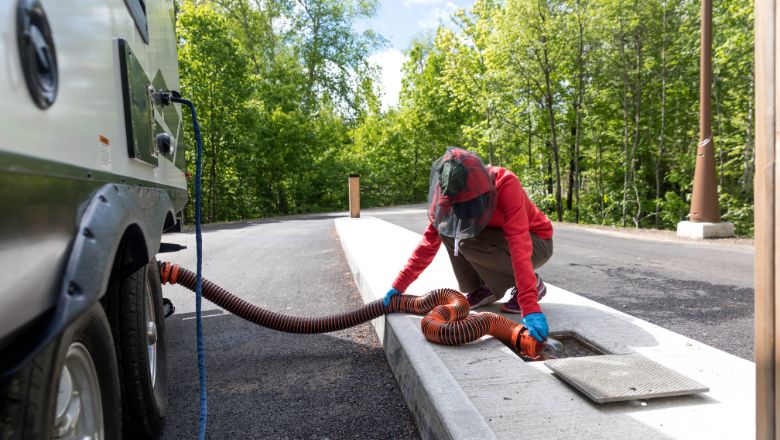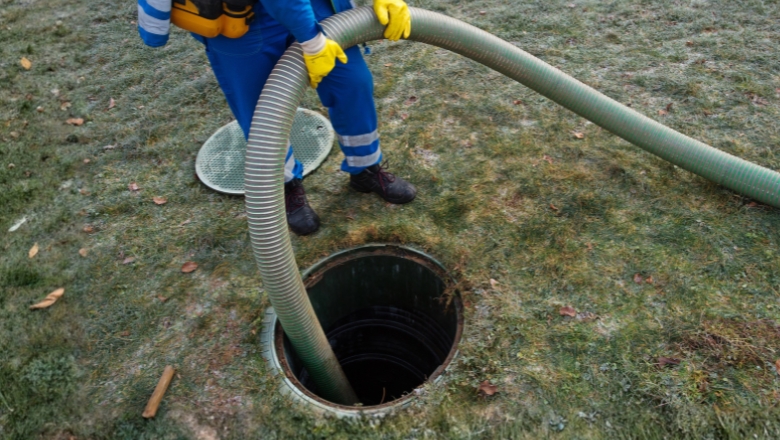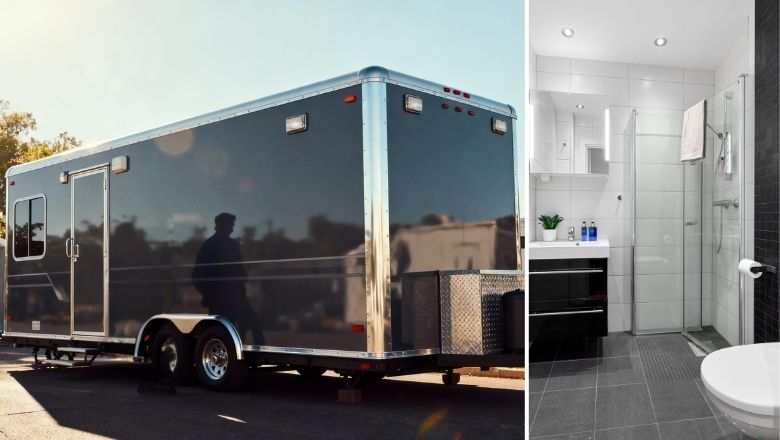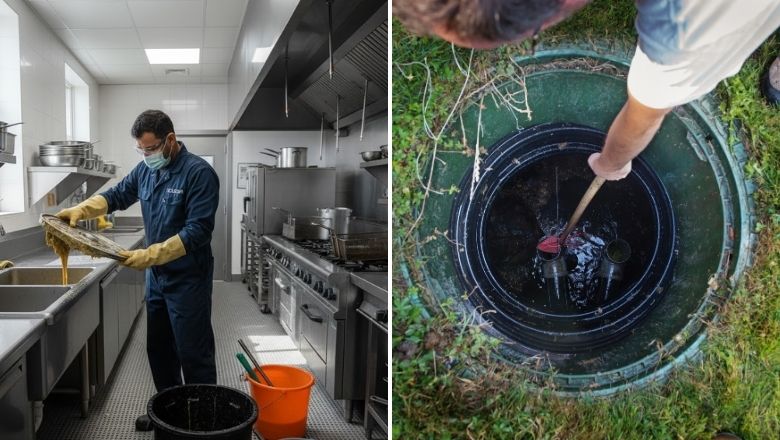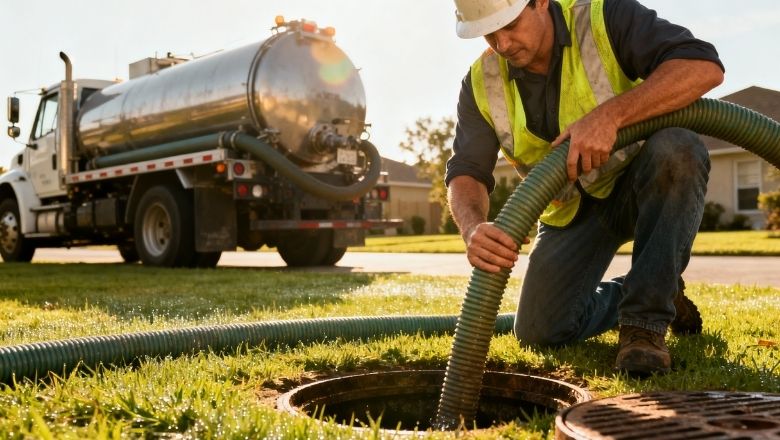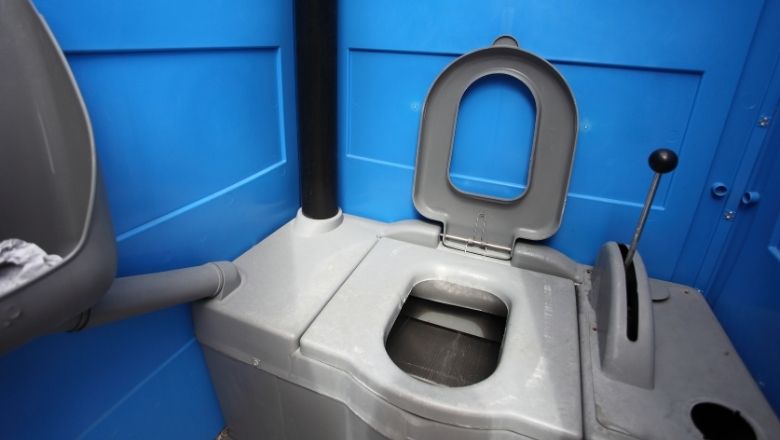Traveling in a recreational vehicle (RV) offers the freedom to explore new places on your own terms—but it also comes with responsibilities. One of the most important aspects of living in a full-time RV is managing waste efficiently to stay comfortable and eco-conscious on the road. Whether parked at a campground or embracing boondocking waste management, understanding how long you can go before dumping your RV waste is key to planning your trip and protecting your plumbing system.
This guide will explain how RV waste systems work and what affects greywater tank capacity. We’ll also share practical tips for extending the time between dumps. When it’s time to empty your tanks, reliable services like RV pumping in Rexburg, Pocatello, Rigby, Idaho Falls, and neighboring communities can make the process hassle-free.
The Importance of Waste Management in RV Living
Why Knowing Your Waste Limits Matters
Proper waste disposal is essential for an uninterrupted RV experience. Full waste tanks can result in bad odors, system failure, and environmental contamination. Knowing your RV’s waste capacity can help you avoid interruptions and ensure a pleasant and comfortable living space.
The Impact of Poor Waste Disposal on RV Systems
Neglecting regular waste disposal can cause blockages and damage to your RV’s plumbing system. According to the most popular RV pumping contractors in Twin Falls, who mostly deal with eco-friendly RV waste solutions, stored waste can result in expensive repairs and shorten the lifespan of your vehicle’s parts. Proper waste disposal protects your investment as well as the environment.
Understanding RV Waste Tanks and Their Capacity
Black Water vs. Gray Water Tanks – What’s the Difference?
RVs have two major waste tanks:
- Black Water Tank: Collects waste from the toilet.
- Gray Water Tank: Gathers wastewater from sinks and showers.
Understanding the distinction helps in managing waste more effectively and preventing cross-contamination.
How Tank Size Impacts Waste Retention
The capacity of your waste tanks directly influences how long you can go without dumping. Your tanks need to be dumped more often if they are small, but you can have longer gaps between the dumping sessions if they are big. Leading septic service experts in Pocatello recommend learning your own RV’s tank sizes so you can make plans accordingly.
How Tank Sensors Help Monitor Capacity
Some newer RVs come equipped with tank sensors that offer real-time feedback on waste capacity. Keeping a check on these sensors helps you plan dumps ahead of time, preventing overflow and system overload.
Factors That Determine How Long an RV Can Go Without Dumping
1. Number of Passengers and Their Usage
The more people in your RV, the quicker your waste tanks will become full. Heavy use by many passengers speeds up the requirement for dumping. According to the most credible septic service and RV pumping experts in Idaho Falls, planning for the number of travelers helps estimate waste accumulation rates.
2. Frequency of Bathroom and Sink Use
Frequent bathroom and sink use increases waste levels. Conserving water and being mindful of usage can extend the time between necessary dumps.
3. The Role of Water-Saving Appliances
Incorporating water-saving appliances, such as low-flow showerheads and faucets, reduces water consumption and waste production. Leading RV pumping and septic service specialists in Rexburg believe these installations contribute to longer intervals between waste disposals.
Tips to Extend Time Between RV Dumping
You don’t have to empty your RV’s waste tank every day. With some clever habits, you can increase the time between dumps and have more freedom on the road.
Conserve Water with Simple Daily Tweaks
- Shorten Showers: Quick, efficient showers help reduce how fast your gray tank fills up.
- Turn Off the Tap: Don’t let water run while brushing your teeth or doing dishes—it adds up fast!
- Try Navy Showers: Get wet, turn off the water to soap up, then rinse. It’s a popular method among seasoned RVers.
Choose the Right Toilet Paper
Regular toilet paper can cause buildup and clogs. Use biodegradable, RV-friendly toilet paper to keep your black tank cleaner and functioning better.
Rethink Dishwashing Routines
- Use a Basin: Washing dishes in a basin rather than under direct running water saves and allows you to dispose of gray water properly if necessary.
- Scrape First: Scrape food bits off plates before washing to keep your gray tank cleaner and odor-free.
By taking on these simple habits, you’ll optimize your RV waste system—and have more time to enjoy the trip. And when it’s time to dump, MVP Rentals has you covered with convenient mobile pumping services across southern Idaho.
Signs That Your RV Waste Tank Needs Dumping Immediately
1. Foul Odors Within the RV
According to Pocatello’s most popular RV pumping specialists, bad odors from drains or the toilet signal that the waste tanks are full and immediately require immediate attention.
2. Slow Drainage and Toilet Issues
Slow-draining sinks, showers, or toilets with trouble flushing can signify full waste tanks or clogs.
3. Tank Level Indicators Reaching Capacity
Leading septic service contractors in Rigby recommend checking tank sensors regularly; if they show high levels, locate a dump station promptly.
Best Practices for Safe and Eco-Friendly RV Dumping
1. Locating Approved Dump Stations Close to You
Use RV dump station finders or apps to locate approved stations. MVP Rentals provides trustworthy RV pumping in Idaho Falls, Pocatello, Rexburg, Twin Falls, and surrounding communities, providing convenient and quality service throughout the location.
2. Proper Steps for Dumping Black and Gray Water Tanks
- Wear Protective Gloves: Maintain hygiene and safety throughout the process.
- Connect the Sewer Hose Securely: Attach one end to the RV’s waste outlet and the other to the dump station inlet.
- Empty the Black Water Tank First: This allows the gray water to wash out the hose afterward.
- Follow with the Gray Water Tank: Eliminates remaining trash from the hose.
- Clean and Store Equipment Properly: Clean and store the hose in a designated compartment.
3. How to Clean and Maintain Your Waste System After Dumping
Flush the tanks with fresh water to eliminate remaining waste after dumping. Use RV holding tank treatments regularly to break down the waste and eliminate odors. Our team also offers professional assistance and services to help your system remain in peak condition.
Consequences of Neglecting Timely Waste Disposal
1. Risks of Tank Overflow and Backups
Overfilled holding tanks can risk waste to back up into the RV, causing unsanitary conditions and potential damage to the interior.
2. Damage to RV Plumbing Systems
Waste overload can clog and destroy plumbing parts, resulting in leaks and expensive repairs. Top septic service specialists in Idaho Falls who specialize in RV plumbing maintenance reveal that it may also lead to premature deterioration of seals, valves, and tank fittings, lowering the operational efficiency of your RV.
3. Health Hazards and Legal Consequences
Overrunning camper sewage systems can pose serious health risks, particularly within tightly compartmentalized RV environments. Illegal dumping or improper waste disposal may result in hefty fines or legal sanctions in many areas. Collaborating with expert RV pumping service experts in Pocatello, Rigby, and neighboring communities, such as MVP Rentals, which adheres to all state and federal waste laws, keeps you in compliance and responsible.
Final Takeaway
Proper waste management isn’t just a matter of convenience—it’s an essential part of RV ownership that impacts hygiene, comfort, and the longevity of your vehicle’s plumbing systems. From understanding the roles of your black water tank and grey water tank capacity to identifying signs that it’s time to dump and applying water-saving techniques, being informed makes a world of difference.
Using eco-friendly methods and smart tools, such as RV toilet best practices, portable waste tanks, and RV holding tank treatments, can extend the time between dumps without compromising your experience on the road. And when it’s time to dump, having reliable partners makes all the difference.
Whether you’re a full-time RVer or an occasional road tripper, our professionalism and compliance guarantee your RV remains in top condition while being environmentally friendly.
Ready to keep your adventures stress-free and sanitary?
Contact MVP Rentals today at (208) 244-7843 for dependable, eco-conscious RV pumping and septic service in Idaho Falls, Pocatello, Rexburg, Rigby, Twin Falls, and surrounding areas.
FAQs
1. How Long Can an RV Waste Tank Last Before Dumping?
An RV waste tank can last 3 to 7 days, depending on the tank size, the number of users, and daily usage. RV black water tanks get filled up faster, particularly with full-time usage, while gray water tanks can last longer if you use water sparingly.
2. Can I Extend the Time Between RV Dumps?
Absolutely. Even the most credible RV pumping and septic service contractors in Pocatello recommend utilizing water-conserving appliances, reducing water usage when it’s not needed, and selecting biodegradable toilet paper does the trick. Maintaining your plumbing regularly and employing septic-safe RV treatments can also help reduce buildup, chemicals, and stink, allowing you to go longer without dumping.
3. Where Can I Legally Dump My RV Waste?
You can dump waste at designated stations in RV parks, campgrounds, rest areas, or municipal facilities. Apps like RV dump station locators can help you find nearby options. If you’re in southern Idaho, MVP Rentals offers mobile RV waste pumping services in Rexburg, Rigby, Idaho Falls, and surrounding areas.
4. What Happens If My Black Water Tank Gets Too Full?
A full black water tank can cause backflow into your RV, odors, and serious harm to your plumbing system. To prevent this from happening, it’s best to empty your tanks before they reach their full capacity.
5. How Do I Prevent Odors in My RV Waste Tank?
Leading RV pumping and septic service contractors in Idaho Falls recommend using RV-safe holding tank treatments to break down waste and control odor. To avoid clogs and buildup, flush tanks regularly with clean water, ventilate using roof vents, and always use biodegradable, RV-specific toilet paper.

